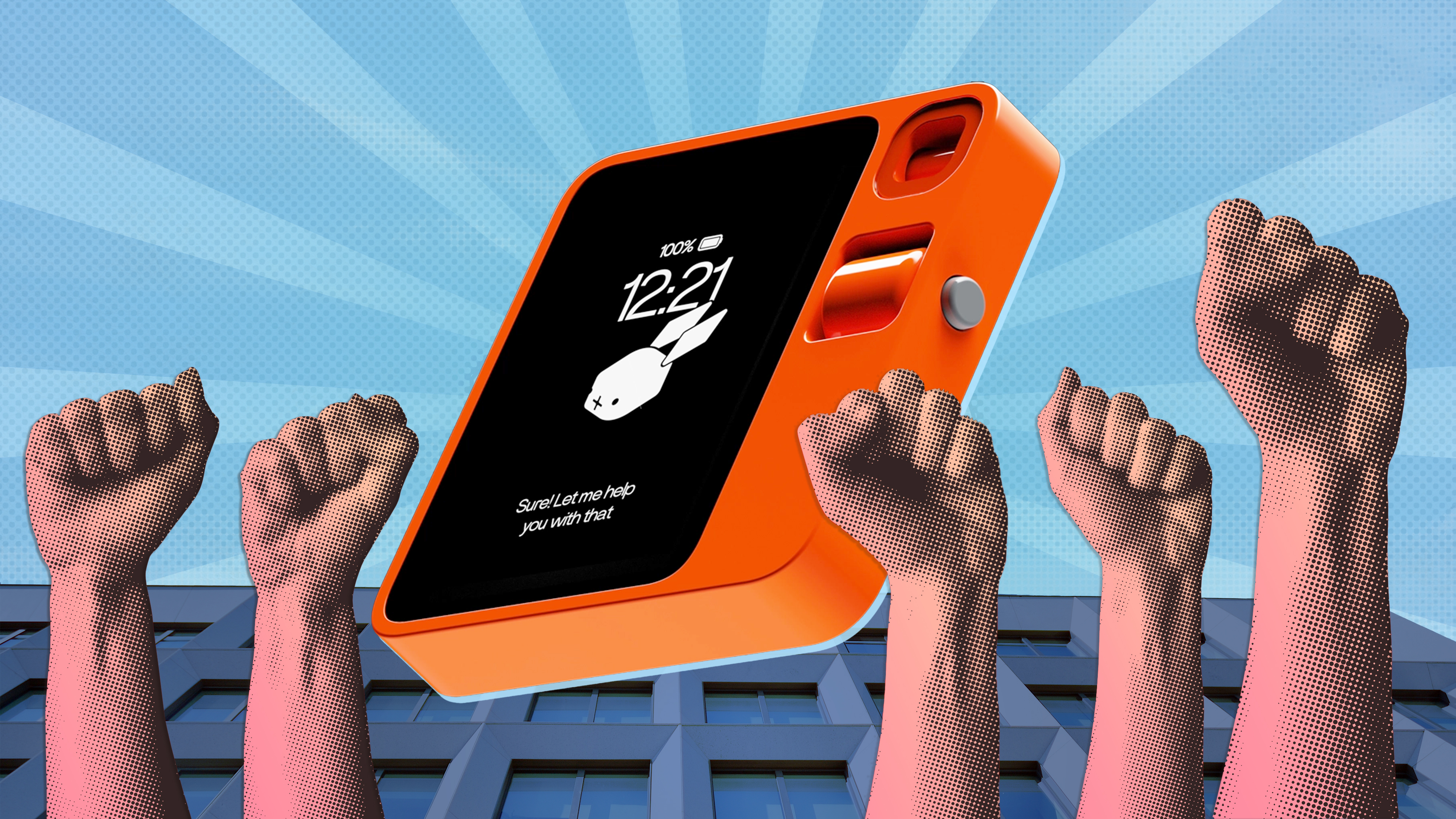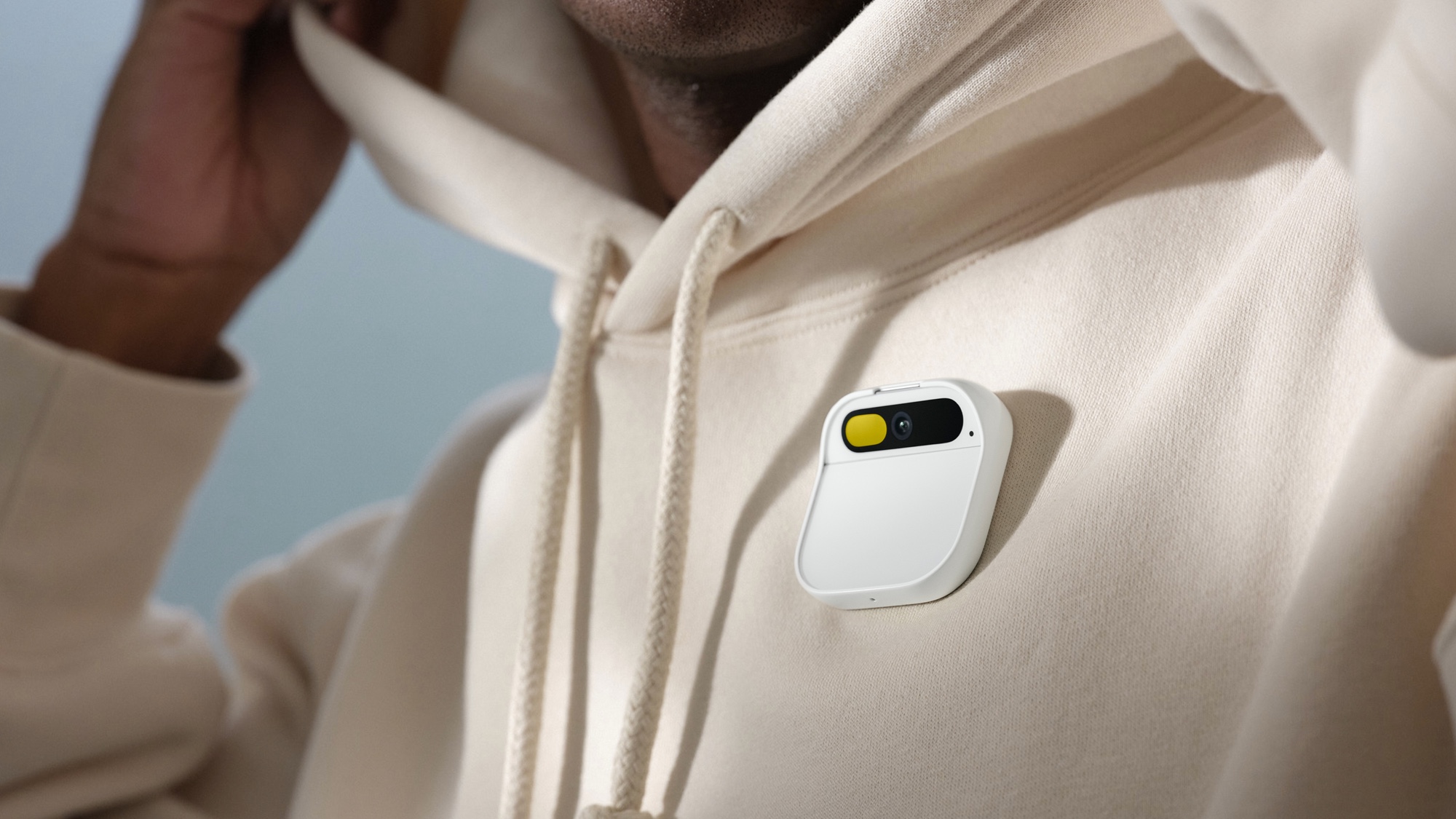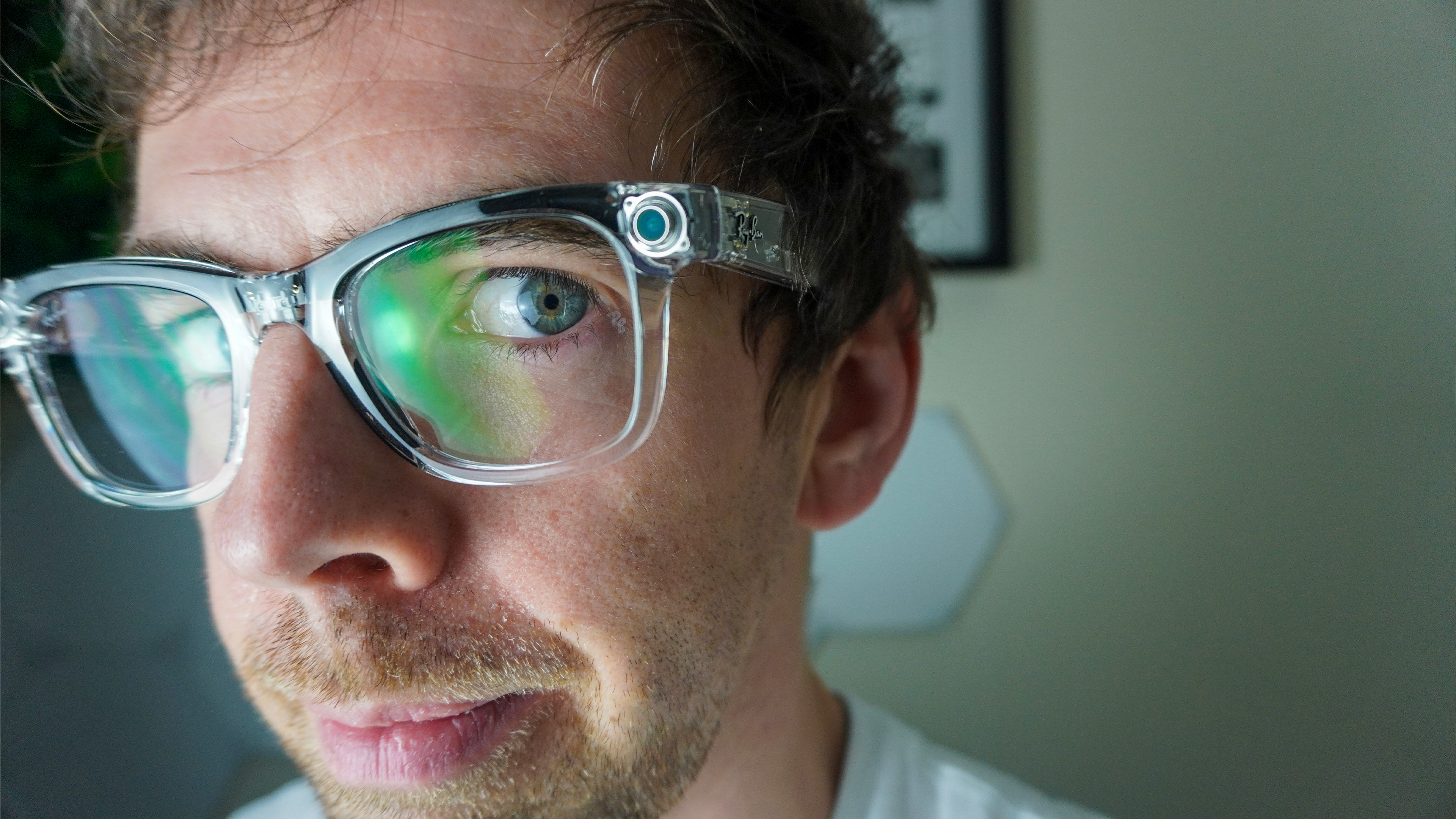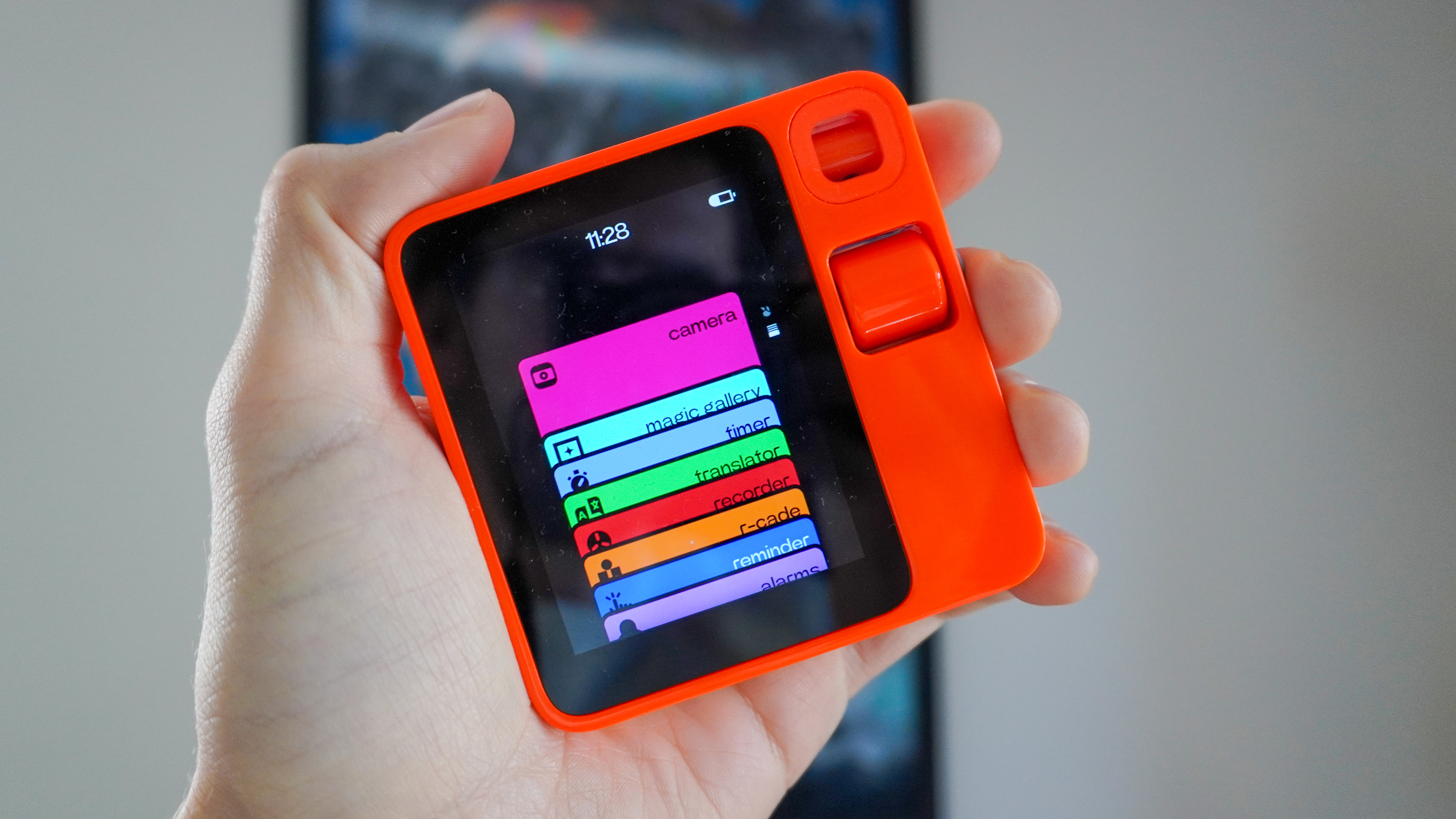What’s next for Rabbit? Employees say they haven’t been paid for months while company teases new AI hardware
Here's what I found out after interviewing the CEO of Rabbit

The Rabbit R1 launched at CES in 2024 to much fanfare — promising an AI-powered device that you could carry around with you to help get stuff done, whether it’s getting answers to questions and identifying objects or doing instant translations or helping you shop or book travel.
However, the wave of negative reviews has apparently left the company in such a financial state that it’s been unable to pay both employees and contractors for months.
Following an interview that Tom’s Guide conducted with Rabbit CEO Jesse Lyu, in which he said the company was planning to launch next-gen AI hardware in 2026, we received a number of tips alleging that Rabbit has failed to pay since late summer.
After investigating further, corroborating with other sources and verifying with evidence, Tom’s Guide can confirm this is the case, and that a small number of company employees have been on strike since the beginning of October.
The timeline
On October 29 after publishing an interview with Rabbit CEO Jesse Lyu about RabbitOS 2.0 and what’s next for AI hardware, I received an anonymous email with some eye-opening accusations about Rabbit Inc. that suggest the situation at the company is far more problematic than the picture painted by the CEO.
Here’s what we’ve been told:
- Rabbit Inc. has been delayed in paying contractors and employees since the beginning of this year. Payroll, since January 2025, has been at least eight days late on being paid out each month. In one instance, payment was 37 days late.
- Payments effectively ceased in July. For the last three months, several employees and contractors haven’t been paid at all. Conversations were ongoing, any threats by employees to go to the press with this were met with strong pleas not to do so, and requests to be paid were responded to as conditional on additional investment coming into the company “at the end of October.”
- Three employees have been on strike since the beginning of October. In response to not being paid since July 2025, a strike is currently ongoing — still happening to this day because these employees still haven’t been paid.
These accusations have been corroborated by several current and former Rabbit employees who wish to remain anonymous, and verified by evidence I’ve seen.
Get instant access to breaking news, the hottest reviews, great deals and helpful tips.
Rabbit’s official response

According to Lyu, the company had planned to generate additional revenue by selling the Rabbit device in India; he noted that the smartphone and headphone company Nothing has sent 70% of its inventory to India, suggesting that the market is potentially lucrative. However, Rabbit had to go into “cash conservative mode” once those plans were derailed.
“We were about to ship in India, because it’s undoubtedly one of the biggest markets,” Lyu told me after we reached out for comment for this story. “We had R1 units ready in May last year. Then all of a sudden, there’s some regulation complications that we couldn’t do, which threw our financial projections off quite tremendously.”
However, Rabbit could be out of its financial fix soon. “I’ve been working really hard to get the round this year, and we’ve signed a legally binding term for our next round,” Lyu said “We’ll get everyone paid for sure, and we’ll follow legal and regulations regarding the exact date.”
A representative from Rabbit added that the company expects “funding to close in the coming weeks,” but cannot disclose the name of the investor. He also clarified that the strike is three employees out of a total of 26, and that the company has “totally respected that decision.”
The business of AI hardware

Silicon Valley startups are often a gamble, and AI hardware companies in particular have been going through some rough times of late. The biggest example is the Humane AI Pin, which was sold off in assets to HP in February.
Apart from behemoths like Meta, which have the resources (and deep pockets) to develop AI-powered hardware like the Meta Ray-Ban Display, startups like Rabbit have to rely on third-party companies to design a product for you to launch over time. In Rabbit’s case, this is a collaboration with Teenage Engineering, and sources tell me that sequel concepts to the Rabbit R1 were shown in 2024.
Regardless of whether you go the more expensive route and design/produce the product on your own, or pay someone else, both ways require a significant amount of money upfront.
So far, Rabbit has gone through five funding rounds since November 2021. In October 2023, Rabbit raised $20 million in funding led by Khosla Ventures, as well as an additional $10 million in December of that year. Since then, the company has not made any official announcements of additional funding. But Lyu has told us this week that he’s finalizing a new round, but would not say for how much, or from whom it was coming.
But does anybody care?

Not about people not getting paid, because of course you do. However, there’s a more systemic AI hardware problem here, beyond all the numbers and what sources have told me. Simply put (in my opinion), there’s a significant rift between the hype machine of AI hardware and people who actually want to use it.
I mean look around, OpenAI is entering the game with Jony Ive and that does legitimize things a little. But whenever I’ve shown my friends the R1 and RabbitOS 2, the Friend pendant or even what seems to have become the default AI wearable in the Ray-Ban Meta smart glasses, the question is always the same: “why is this even a thing when I have a phone?”

To many people, AI hardware feels needless, when the devices you already have can do pretty much all the AI-infused tasks you’d want to do through apps and software.
“I agree that you shouldn't carry two devices. No one wants to carry two devices. In fact, we were not expecting you to carry your R1 with you, even though we allow a sim card to make it mobile — even though a lot of our fans take them everywhere,” Lyu said in my first interview with him.
The sales match that sentiment too, as Meta’s Reality Labs (the team behind the smart glasses) posted a whopping $4.4 billion loss last quarter. And while I’m always in favor of companies bringing new ideas to the table (that means more cool/weird tech for me to test and you to buy), it just feels like the people got caught up in the excitement of the moment and moved on by voting with their wallets.
A second chance at a first impression?

Going back to my initial interview transcript with Jesse Lyu, there are a couple of comments that just hit differently now. Firstly, I put my case to him of AI possibly being a bubble and asked whether he saw things the same or disagreed.
"I disagree that there's an AI bubble,” he said. “There is AI overhype for sure. On the keynotes, we told people, ‘Hey, there's four things you can do with this agent.’ And people immediately grab the R1 and say, ‘order a 12 pack of Coke on Amazon,’ and it doesn't work. People blame that on us. Well, now we can do that. But there is certainly over-hyping around this industry."
The reason why this one leapt out to me is the overwhelming uphill challenge that has faced Rabbit over the past year. The company landed with huge fanfare at CES (I even gave the R1 “best of show” at CES 2024), but ultimately, what we felt we got was half-baked.
It’s been a battle for redeeming consumer confidence ever since, but a lot of publications moved on very quickly after being burned by the OG R1. That’s where this drive to continually update the software has come from and fix (almost) all the problems.
Can the company thrive again? Given the evidence we’ve seen and the current landscape of AI hardware, one of the last things Jesse said to me is even more pertinent.
"We first wanna make sure we can survive,” Lyu commented in response to me asking about the company’s future plans. “That is what we've been focusing on right now.” Unless the company can start paying workers for their efforts, that future seems in doubt.

Follow Tom's Guide on Google News and add us as a preferred source to get our up-to-date news, analysis, and reviews in your feeds.
More from Tom's Guide
- I spent 2 weeks speaking to a Spanish AI in Babbel — here's why it could be the future of learning languages
- I used ChatGPT Agent to find the perfect Black Friday TV deal — here's how you can too
- I tried Google Photos’ new ‘Help me edit’ tool on iPhone — and I’m already obsessed

Jason brings a decade of tech and gaming journalism experience to his role as a Managing Editor of Computing at Tom's Guide. He has previously written for Laptop Mag, Tom's Hardware, Kotaku, Stuff and BBC Science Focus. In his spare time, you'll find Jason looking for good dogs to pet or thinking about eating pizza if he isn't already.
You must confirm your public display name before commenting
Please logout and then login again, you will then be prompted to enter your display name.










